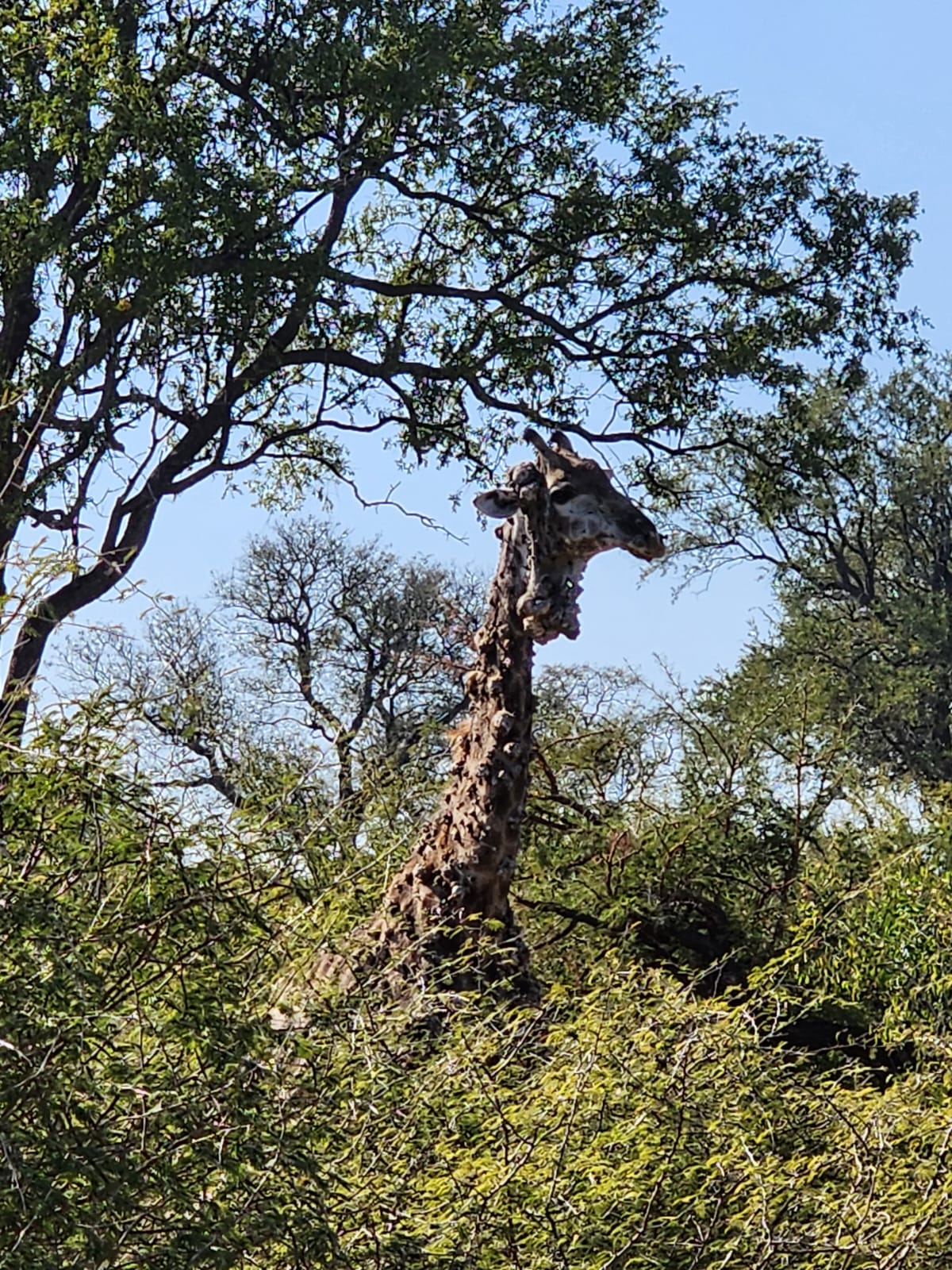How many giraffe species are there? Understanding this is key to their protection
 Giraffes at Lake Nakuru National Park in Kenya. Xinhua via Getty Images
May 30, 2024 - Laura Bertola, Postdoctoral fellow at Copenhagen University, Leiden University
Giraffes at Lake Nakuru National Park in Kenya. Xinhua via Getty Images
May 30, 2024 - Laura Bertola, Postdoctoral fellow at Copenhagen University, Leiden University
Giraffes, with their distinctive body shape and variations in coat patterns, have long been an example in evolutionary biology teachings. They are a textbook example of how species adapt to their surroundings and survive under harsh conditions. Despite this, scientists and conservationists still grapple with understanding the evolutionary history of giraffes.
Giraffes occur throughout most of the savannah landscapes in sub-Saharan Africa. Fewer than 70,000 are left; a sharp decline from the estimated 150,000 in the 1980s. This makes it even more relevant to understand their diversity, as increased conservation efforts are needed to safeguard this diversity for the future.
However, scientists still struggle with how different populations are related to each other, and the number of species they represent. The International Union for Conservation of Nature currently recognises giraffes as a single species. Other studies suggest the existence of two, three, four or even six species.
The debate surrounding giraffe taxonomy, which deals with the classification of species, may sound like a purely scientific exercise. But taxonomy often guides conservation efforts. Treating all giraffe populations as a single species may obscure unique genetic lineages. To conserve biodiversity, it is necessary to accurately identify and understand the distribution of diversity, between and within species.
A complex evolutionary history
Our recent study delves into the genomic landscape of giraffes, improving our understanding of giraffe diversity.
By analysing the entire DNA of 90 giraffes from 29 locations in Africa across their natural range, we reconstructed the giraffe’s evolutionary past. Our findings reveal strong differentiation between populations of giraffes, identifying four major lineages:
- northern giraffes (west and central Africa)
- reticulated giraffes (Horn of Africa)
- Masai giraffes (east Africa)
- southern giraffes (southern Africa).
What exactly drives this population structure is still unknown. While some boundaries align with geographical features like rivers, others defy such explanations. In many places, neighbouring lineages connect in their distributions. For example, three of the four major lineages mentioned above occur in Kenya. Despite this close geographic proximity, reports of hybridisation between major lineages in the wild are rare. This contrasts with observations in captive giraffes, where hybridisation does occur, suggesting there is something else that deters them from doing so in the wild.
But we’re not only interested in describing contemporary patterns of diversity. We’d also like to understand the processes which shaped the patterns we observe today. Looking at full genomes, or the entire DNA of the individuals, allows us to take a deeper dive into the evolutionary history of giraffes.
Read more: Giraffes range across diverse African habitats − we’re using GPS, satellites and statistics to track and protect them
The data reveals a rather complex story. We tend to think of evolution as a tree, just like English naturalist Charles Darwin drew in his notes. Following this concept, there is a common ancestor, which gives rise to two lineages of offspring, which continue to evolve into ultimately separate species.
Genomic data, however, show that this is too simple. There are many cases in which there has been gene flow, or hybridisation, between lineages after they split from their common ancestor. Instead of an evolutionary tree, maybe it would be better to talk about an evolutionary network, with connections going back and forth, forming loops.
This is also what we observe in giraffes. Historically, there has been gene flow between lineages, and giraffe evolution cannot be properly presented in the form of a tree.
In particular, reticulated giraffes, with their distinct patchy coat or pelage, have been heavily affected by historical gene flow. So much so that we could refer to them as a hybrid lineage.
Conserving giraffes
There are many different definitions of what constitutes a separate species. Whether we regard the lineages described here as separate species or not, it is clear that they each represent a unique branch of giraffe diversity.
Giraffes have been reported as undergoing a “silent extinction” – international attention to their fate has been limited although populations are dwindling across Africa. They are estimated to have faced a 40% decrease since the 1980s.
Read more: Giraffes could go extinct – the 5 biggest threats they face
Conservation actions can counteract this trend by protecting giraffe habitats and ensuring connectivity between populations. Genetics can help to guide conservation actions. It can be used to identify which populations belong to which lineage, and therefore what part of giraffe diversity is being lost. For example, if particular populations were to be lost through local extinctions, a whole branch of the giraffe tree would disappear. Genetics can help with prioritisation of particular populations for conservation efforts, to maintain existing diversity most effectively.
Similarly, if translocations are planned to reintroduce giraffes in an area where they previously went extinct, or to reinforce existing populations, conservationists probably should take individuals from the same genetic lineage, to keep the natural pattern of diversity intact.
This has also been discussed for other species, such as lions, and aims to give guidance to managers who are faced with tough decisions about which populations to prioritise.
This is particularly relevant in regions where multiple lineages coexist, such as Kenya. Here, the National Recovery and Action Plan for Giraffe in Kenya (2018-2022) already acknowledges these distinctions, albeit still regarding them as a single species. By moving beyond the conservation of giraffes in general, but also safeguarding populations and their underlying unique evolutionary histories, we can ensure the preservation of the rich tapestry of giraffe diversity for future generations.


